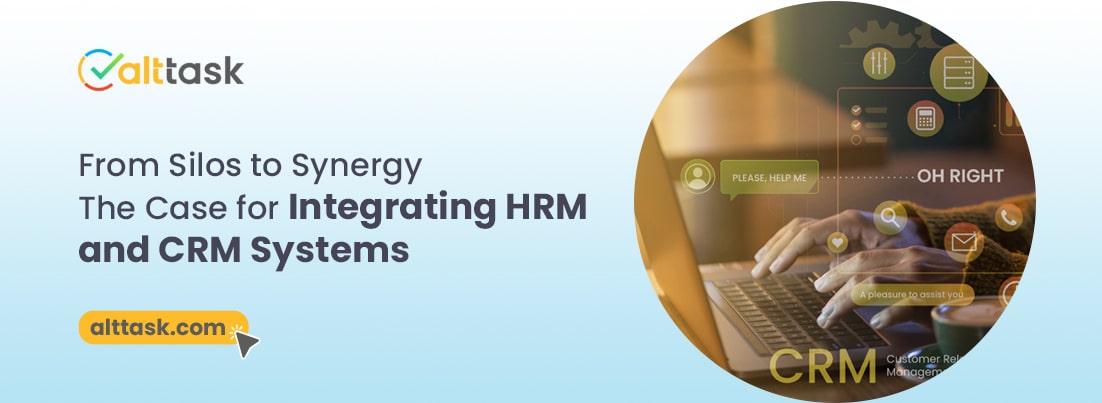From Silos to Synergy: The Case for Integrating HRM and CRM Systems

In the digital age, the quest for efficiency within organizations has led to the rise of various software systems designed to streamline operations and enhance productivity. Among these, Human Resource Management (HRM) and Customer Relationship Management (CRM) systems stand out for their critical roles in organizational success. However, the real magic happens when these two systems cease to operate in isolation and start working in synergy. Integrating HRM and CRM systems isn’t just an operational upgrade; it’s a strategic transformation. Here’s why the fusion of these systems matters and how it can be a game-changer for businesses aiming for the pinnacle of efficiency and effectiveness.
Breaking Down the Silos
Traditionally, HRM and CRM systems operate in silos, serving their distinct purposes. HRM systems focus on managing employee-related processes, from recruitment to retirement, while CRM systems are designed to manage a company's interactions with current and potential customers. This separation often leads to a disconnect between an organization's internal efficiency and its customer-facing effectiveness. By integrating HRM and CRM systems, businesses can bridge this gap, fostering a culture of collaboration and mutual understanding between different departments.
The Benefits of Integration
Enhanced Communication
Integration facilitates seamless information flow between HR and customer service departments, ensuring that all teams are on the same page regarding policies, product updates, and customer feedback.
Improved Efficiency
With integrated systems, data duplication is minimized, and processes are streamlined, saving time and reducing the likelihood of errors.
Better Data Analysis
Combined data from HRM and CRM systems offer richer insights into employee performance and customer satisfaction, enabling more informed decision-making.
Increased Employee Engagement
Employees can have a better understanding of customers’ needs and expectations, leading to more personalized service and, consequently, higher customer satisfaction.
The Best HRM and CRM Systems
For businesses seeking to integrate their HRM and CRM systems, the market offers several outstanding options. However, the "best HRM and CRM systems" are those that align with your specific business needs, size, and goals. Ideally, look for systems that offer flexibility, scalability, and a user-friendly interface.
Best CRM in Ahmedabad
For businesses located in Ahmedabad or targeting the Indian market, selecting the best CRM system requires considering local market dynamics. A CRM system that offers robust analytics, seamless integration with social media and marketing platforms, and excellent customer support would be ideal.
Cheap HRM
Cost is a critical factor for many businesses when selecting an HRM system. Fortunately, there are affordable, yet efficient, HRM solutions that offer essential features such as employee tracking, payroll management, and performance analysis without breaking the bank.
CRM in Synergy
The ultimate goal of integrating HRM and CRM systems is to achieve a state of synergy where the whole is greater than the sum of its parts. This synergy not only enhances operational efficiency but also boosts customer satisfaction and employee engagement, leading to sustainable business growth.
Conclusion
In conclusion, dismantling the silos between HRM and CRM systems and moving towards integration isn’t just a technological upgrade; it’s a strategic decision that can redefine how businesses operate. By fostering synergy between these two essential systems, companies can unlock new levels of efficiency, effectiveness, and employee engagement, positioning themselves for success in the competitive business landscape.



